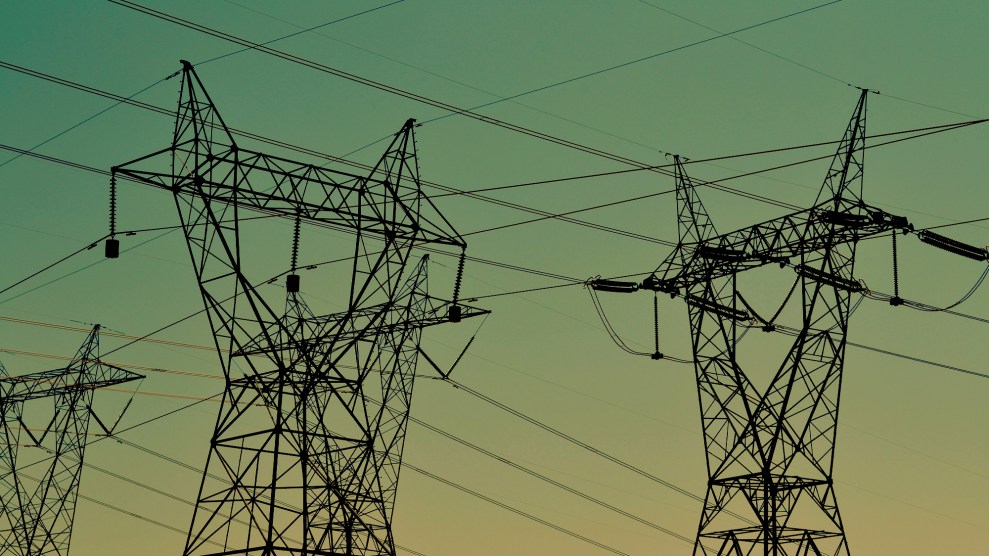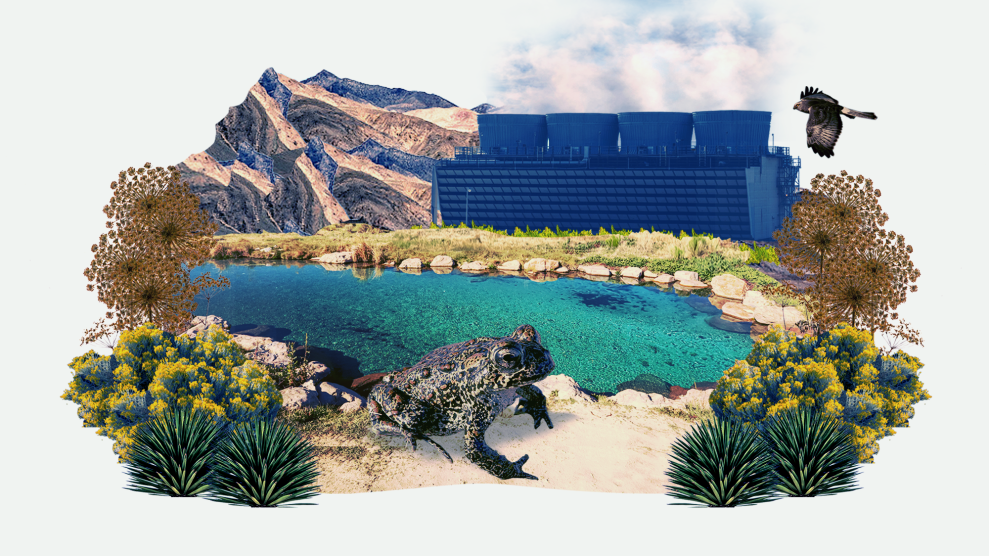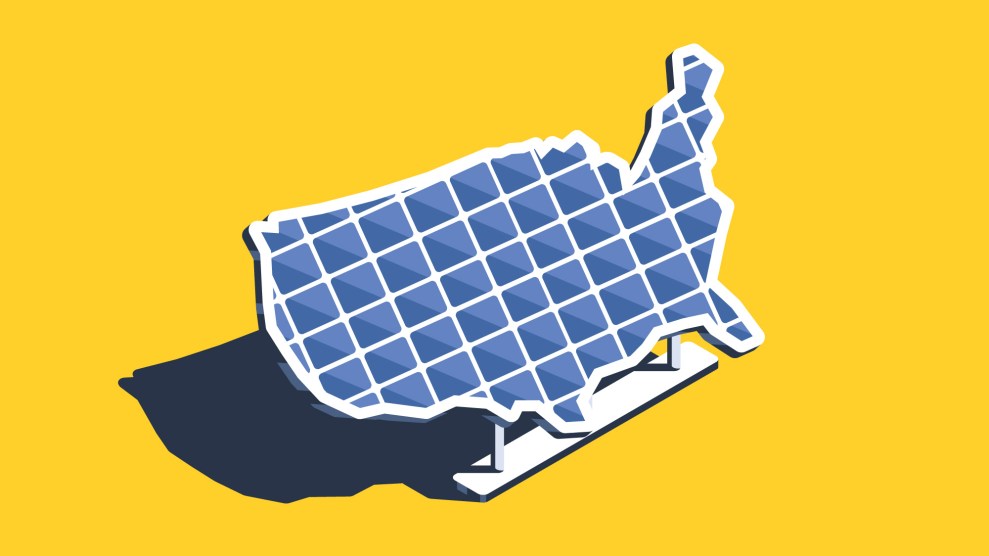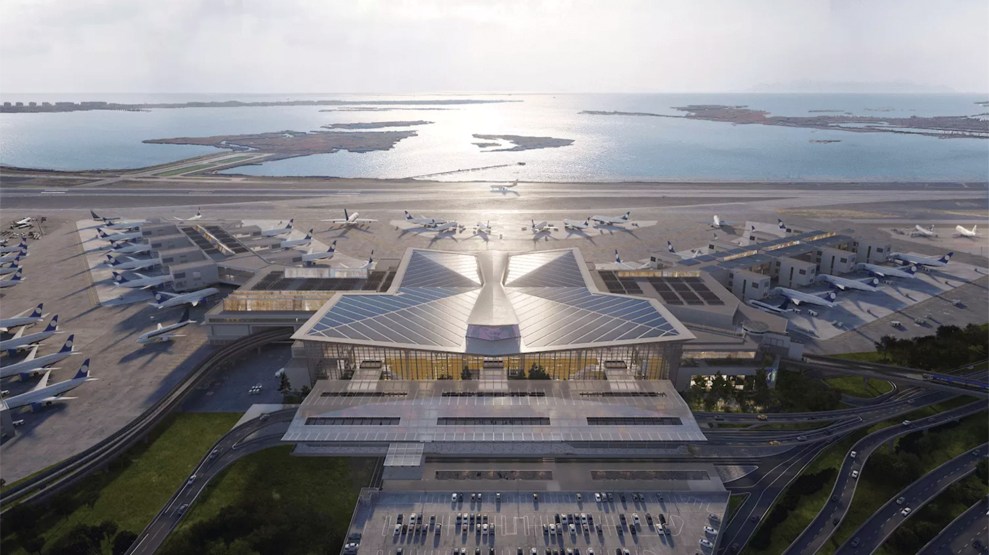
The lines of transition towers criss cross in the sky at dusk.Fré Sonneveld/Unsplash
Judge William M. Conley watched as the Cardinal-Hickory Creek Transmission Line inched toward the Upper Mississippi River National Wildlife Refuge—a 240,000-acre bird sanctuary through which the fully funded power project lacked the permits to pass. By January 2022, he’d seen enough. It “amounts to little more than an orchestrated trainwreck,” Conley, an Obama-appointed federal judge from the Western District of Wisconsin, wrote in a scathing 23-page opinion that delayed construction.
More than two years have passed since Conley blasted the consortium of utilities and government entities behind the massive clean energy project for “playing a shell game,” accused them of behaving “cavalierly,” and derided their legal arguments as “thin porridge indeed.” Since then, the legal battle has continued ricocheting through the courts, shedding light on one of the most intractable debates in the struggle to decarbonize the US economy. In March 2024, Conley again ordered a halt to construction. That meant more delays for the transmission line, which had already cost nearly $650 million, some $156.8 million over budget.
Those delays might now be coming to an end. Last week, the Seventh Court of Appeals lifted Conley’s most recent injunction, apparently paving the way for construction to resume and for the promised climate benefits of the project—an annual emissions reduction of between 150,000 and 1.1 million tons of carbon, according to its backers—to finally be realized. Conley is set to hear a last-ditch motion next week from plaintiffs still hoping to thwart the deal, though it’s unclear if that will come in time to stop the utilities from clearcutting the land.
As the need for new infrastructure to mitigate and adapt to climate change grows more dire, the massive for-profit companies behind these projects have sought to steamroll local opposition and bypass inconvenient—and, according to many, unreasonably onerous—laws. That’s resulted in fights not just between developers and environmental activists, but often between competing groups of environmentalists who are waging an increasingly high-stakes debate: Are the patchwork of local, state, and federal permitting rules an archaic impediment to green energy, or are they a vital safeguard holding communities together?
Virtually everyone involved in the debate agrees that investment in new energy infrastructure has become increasingly urgent. “To meet [the Biden administration’s goals of] 100 percent…clean electricity energy by 2035 and…a zero-emissions economy by 2050, the US Department of Energy says we will need to triple our transmission capacity by 2050,” says Matthew B. Eisenson, who leads the Renewable Energy Legal Defense Initiative at Sabin Center for Climate Change Law. Since renewables are often sited specifically to maximize their energy input—solar farms, for example, are in sunny areas—they may not always be near population centers. Transmission lines are needed to transport the energy to consumers. Eisenson explains that we need to install 54,500 gigawatt-miles of new transmission lines. The Biden administration has already set aside $73 billion for this work and other updates to the grid.
Supporters of the Cardinal-Hickory Creek transmission line say it’s a key part of the region’s transition away from fossil fuels. When complete, the project—whose utility company coalition includes American Transmission Company, ITC Midwest LLC, and Dairyland Power Cooperative, with backing from the federal government’s Rural Utility Service—is supposed to connect 161 solar and wind projects to the grid.
Conservation groups opposing the plan counter that the developers didn’t even consider options that wouldn’t endanger such an important wildlife preserve. The sensitive ecology of the region is wholly unique, explains Jennifer Filipiak, the executive director of the Driftless Area Land Conservancy, one of the plaintiffs in the suit. The Driftless Area—which covers parts of Wisconsin, Illinois, Iowa, and Minnesota, including the refuge—”is where the glaciers never extended and receded.” That difference, over 12 millennia ago, had a lasting impact on the ecosystem. “It’s like you’re in a totally different place,” she says. “We have a lot of unique features, species, and habitats here.”
For months, the project has been stalled at the edges of the refuge, as the utilities worked on an agreement with the US Fish and Wildlife Service to swap 20 acres of the existing refuge for 36 new acres elsewhere. That swap was reportedly completed on Thursday, though the conservation groups are still hoping for a last-minute judicial intervention to once again halt construction. Either way, the legal battle could have lasting implications for the future of protected land, green energy, and climate action.
The Cardinal-Hickory Creek fight is as much about legal principles as it is about the fate of the mile-wide section of the wildlife refuge the developers want to traverse. The actual environmental impacts of the current deal on the table are arguably not the worst outcome, explains David Drake, a wildlife specialist at the University of Wisconsin. With proper mitigation, he argues, the ecosystem could respond well to the proposed land swap. “After the transmission towers are constructed, there is a minimal impact at that point,” he explains, though he warns that construction would still pose dangers like habitat disturbance and invasive species.
The utility coalition behind the project has submitted federal filings that claim the new land “has tremendous conservation value to the Refuge…since it provides higher quality habitat and less fragmentation.” Proponents of the plan, like Princeton Professor Jesse Jenkins, who heads the university’s Zero-Carbon Energy Systems Research and Optimization Laboratory, agree. Following Conley’s March ruling, Jenkins wrote that the opposition’s arguments were “absurd” and pointed out that the swap would retire two existing transmission lines on the newly added land.
But more important, according to the groups opposing the project, is how the developers went about constructing the transmission line and what would happen if they got the legal gold stamp to do it again. “It doesn’t matter if it’s a bad deal, a neutral deal, or a really good deal,” Filipiak says. “[It’s] the precedent that it is setting.”
Howard Learner, an attorney representing opponents of the project, argues that his clients were left with little choice but to sue because the utilities and their government backers attempted to fast-track the deal without proper permitting. If the developers’ tactics are rewarded, he warns, public lands all over the country could be in danger—especially in a future Trump administration that could aggressively seek to evade environmental protections. “They will put our national wildlife refuges and national parks and national wilderness areas up for sale in a swap-a-rama,” he predicts.
Eisenson, who isn’t involved in the case, agrees that it could set a precedent for land swaps. He’s not convinced that the practical effects of such a precent would be particularly harmful, however, due to the highly specific nature of this dispute. At 261 miles long, the Upper Mississippi refuge poses an unusually formidable obstacle for a transmission line, one that other projects are unlikely to encounter. And he worries a final ruling in favor of the conservation organizations could cause backsliding to fossil fuels “if it looks like investing in transmission for wind and solar is too costly and too risky.”

The legal basis for opposition to the Cardinal-Hickory Creek project dates to the 1997 National Wildlife Refuge System Improvement Act, which requires public input in land management decisions and mandates that any alterations be compatible with the purpose of the refuge: that is, wildlife protection and recreational opportunities for visitors.
The law followed what Learner calls a “death of 1,000 cuts” to the wildlife refuges. In the ‘80s and ‘90s, he explains, “refuge managers were being put under political pressure to engage in [deal-making] and allow big power lines and pipelines and highways to run through the middle of our refuges.” This led to massive habitat fragmentation, which is detrimental to wildlife. “Animals need large pieces of connected land,” Learner says, and “the wildlife refuges were getting carved up.”
Conservation groups and other opponents of development have become increasingly adept at using these legal tools. “Transmission lines are an especially difficult thing to build,” says Aidan Mackenzie, a fellow at Institute for Progress who supports the project. “It’s complex linear infrastructure that just cuts through many different jurisdictions. You’re impacting a lot of different communities…There are just way more chances that people will have to take issue with their projects.”
In this case, Learner and his clients argue that the mandatory assessments of the project’s possible environmental consequences have been inadequate—an increasingly common scenario as the Bureau of Land Management receives pressure to approve green energy projects. Since the developers didn’t evaluate potential routes that circumvented the refuge, opponents say, they failed to consider the full impact. “If they had, they may have concluded that avoiding the Refuge altogether would be the alternative with the least environmental impact,” says Filipiak.
Proponents such as Jenkins counter that avoiding the refuge altogether simply isn’t feasible. “The Upper Mississippi Wildlife Refuge extends north to south through Minnesota, Wisconsin, Iowa, and Illinois for approximately 260 river miles!” he wrote on X, following the March injunction. “So can’t go around it. Gotta go through it.”
When confronted with that argument back in 2017, the EPA declined to try to block the project but instead “strongly recommended” in its assessment that the developers evaluate routes outside of the refuge. Regardless, the utilities decided that their preferred plan included cutting a mile-long path through the reserve. Since a previous transmission line had passed through the refuge in the same spot, the US Fish and Wildlife Service, which manages refuges, granted a permit in 2019.
But from there things got even more complicated. The utilities asked for a slightly amended right of way and then, before it could be approved, instead suggested the land swap. In August 2021, the Fish and Wildlife Service “responded favorably” to the land swap idea but did not explicitly approve it. A month later, the agency withdrew its entire compatibility determination from 2019 that allowed the utilities to pass through the refuge at all, saying it had “learned that an error had previously been made.”
Despite the lack of formal approval—for the right of way permit, or for the land swap—the developer coalition commenced building the utility line in 2021. Learner describes this process as “steamrolling.”
“They kept building and building and building while the courts were finding that they hadn’t satisfied their permits,” Learner says—a tactic he calls “a typical developer strategy.” Builders, he complains, might “ignore all the stop signs and tell everybody: How you could stop us now [when] we’ve already built 80 percent?”
Although not publicly known at the time, it has since emerged that the Fish and Wildlife Service and one of the power companies “had already entered into a non-binding understanding for a land exchange/purchase in private writing dated October 29, 2021,” explained Conley in a 2024 ruling.
The utilities continued their path toward the refuge even after Conley warned them against building across it in January 2022. In that order, the judge had called the utilities out at their tactics, stating that “while [the defendants] assert they are acting in good faith, there is substantial, contrary evidence in this record.” He explained that “the Utilities have continued construction on the Iowa side of the line and started construction on the Wisconsin side in October 2021, even as they maintained passage through the Refuge was uncertain.” And he accused the utilities of attempting “to evade judicial review until any route, other than through the Refuge, would be so prejudicial that a court would have little choice but to approve the crossing.”
Regardless of Conley’s scorching, the gambit appears to be paying off. A federal appeals court overturned Conley’s initial injunction in 2023. Meanwhile, the Fish and Wildlife Service raced forward with the utilities’ land-swap plan, giving the surrounding community just a 14-day public review and comment period—an amount of time that the plaintiffs challenged as inadequate. “It is setting [precedent] that you can do something as simple as this without public input, without public comments,” Filipiak says.
The unusually brief comment period was especially discouraging because of the outpouring of engagement from community members worried that the project could harm the environment, local tourism, and their property values. They were joined by a bipartisan group of US Senators, members of Congress, and state lawmakers who urged government officials to consider alternative routes and more rigorous environmental assessments. “It’s pretty amazing to see 1,000 people come together in an area where the largest town is 5,000 people,” Filipiak says.
As of now, half of the approximately 100-mile transmission line is already operational, while the remaining half sits in limbo. Everything is built, save for the mile-long stretch through the refuge.
In March 2024, Conley placed a 30-day preliminary injunction on construction and ruled that the plaintiffs have “a right to challenge the proposed land exchange in court before the metes and bounds of the Refuge are forever altered.” He ordered both parties to come back with supplemental briefs about whether the swap will actually benefit the refuge.
The utilities responded, arguing that “the federal agencies that granted the land exchange and issued permits for the project acted within their legal authority under federal law.” They once again appealed, and last week the appeals court lifted the injunction.
The Fish and Wildlife Service and the utilities finally completed the land exchange on Thursday, May 9, according to the Associated Press. A representative for the utilities reportedly said the exact start date of construction is still up in the air. For his part, Conley has set a new hearing for next Tuesday—five days after the land swap took place—to consider a final plea from the conservation groups hoping to pause the project.
Learner, meanwhile, is concerned that the utilities could start “clearcutting and construction” through the refuge before Conley has a chance to rule next week. “The Conservation Groups deserve their long-delayed day in court for a judicial review and a fair determination of the substantive merits of the claims before any damage occurs to the Refuge’s public lands and waters,” he said in a statement Thursday.
Mackenzie worries about the environmental toll of the legal back and forth. The project has already taken a decade, and for every additional year it remains offline, the country forfeits between 150,000 to 1.1 million tons of carbon savings, he says. “That’s a real cost.”
Mackenzie isn’t arguing that local communities should have no role in approving clean energy projects. “There are things to do to improve the ability of people to access the process, provide public comments, and be informed what the project impacts are,” he concedes. But he thinks that the glacial pace of construction dictated by laws from an earlier era is not helping anyone. “The never-ending litigation might need to be curtailed because these timelines just aren’t consistent” with Biden’s decarbonization goals, he adds.
Learner disagrees. “We can achieve renewable energies and climate solutions in our country without building transmission lines everywhere and anywhere,” he says. And if the Cardinal-Hickory Creek developers get their way, he argues, it “would create the distressing precedent of allowing transmission companies to bulldoze their way through protected national wildlife refuges.”
















